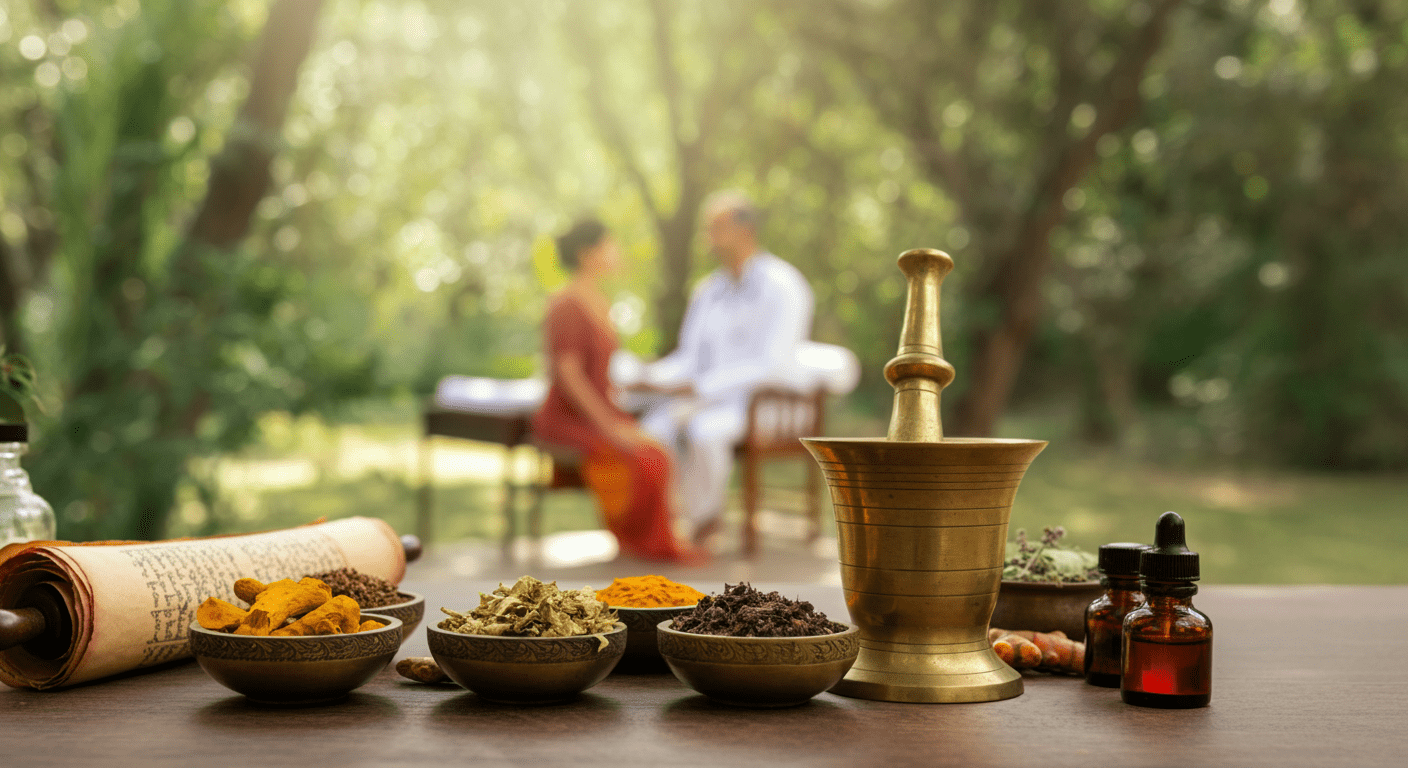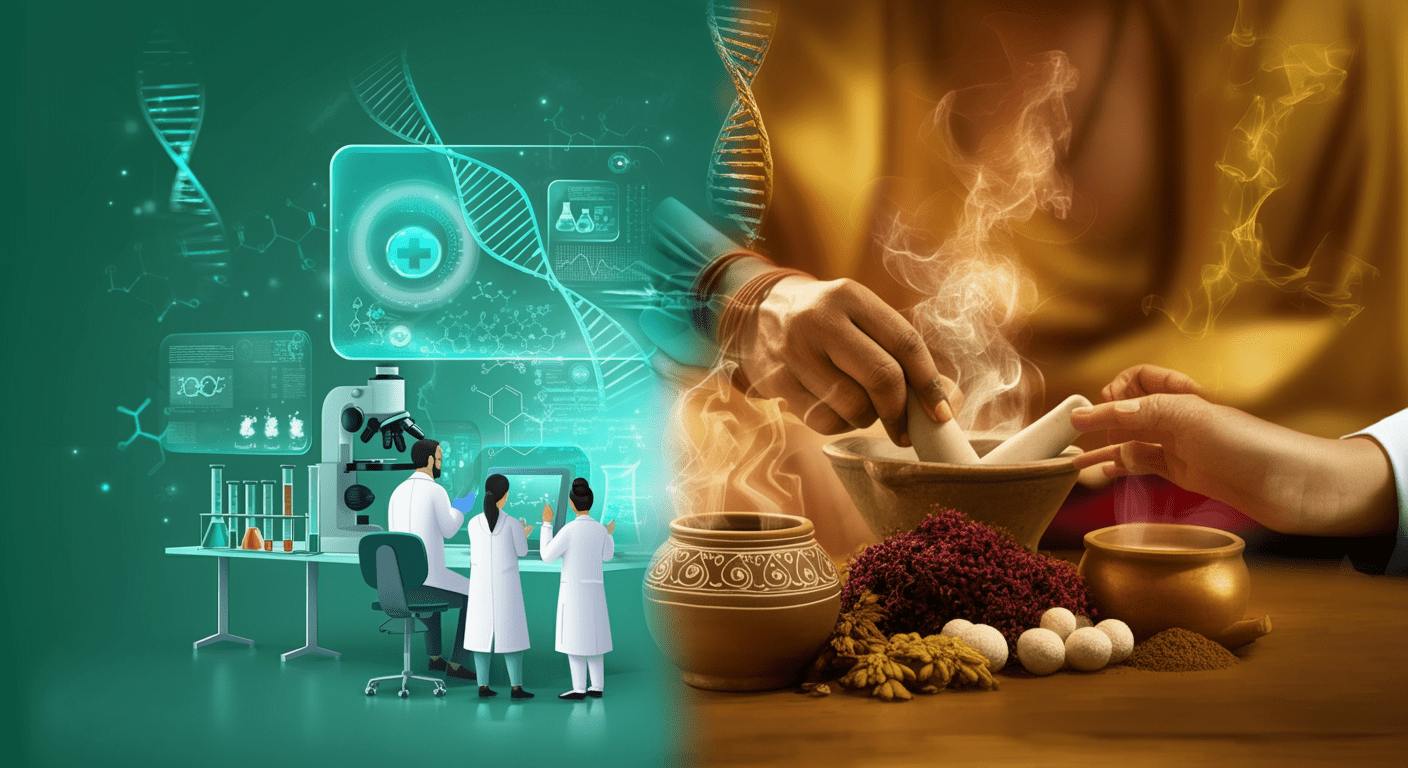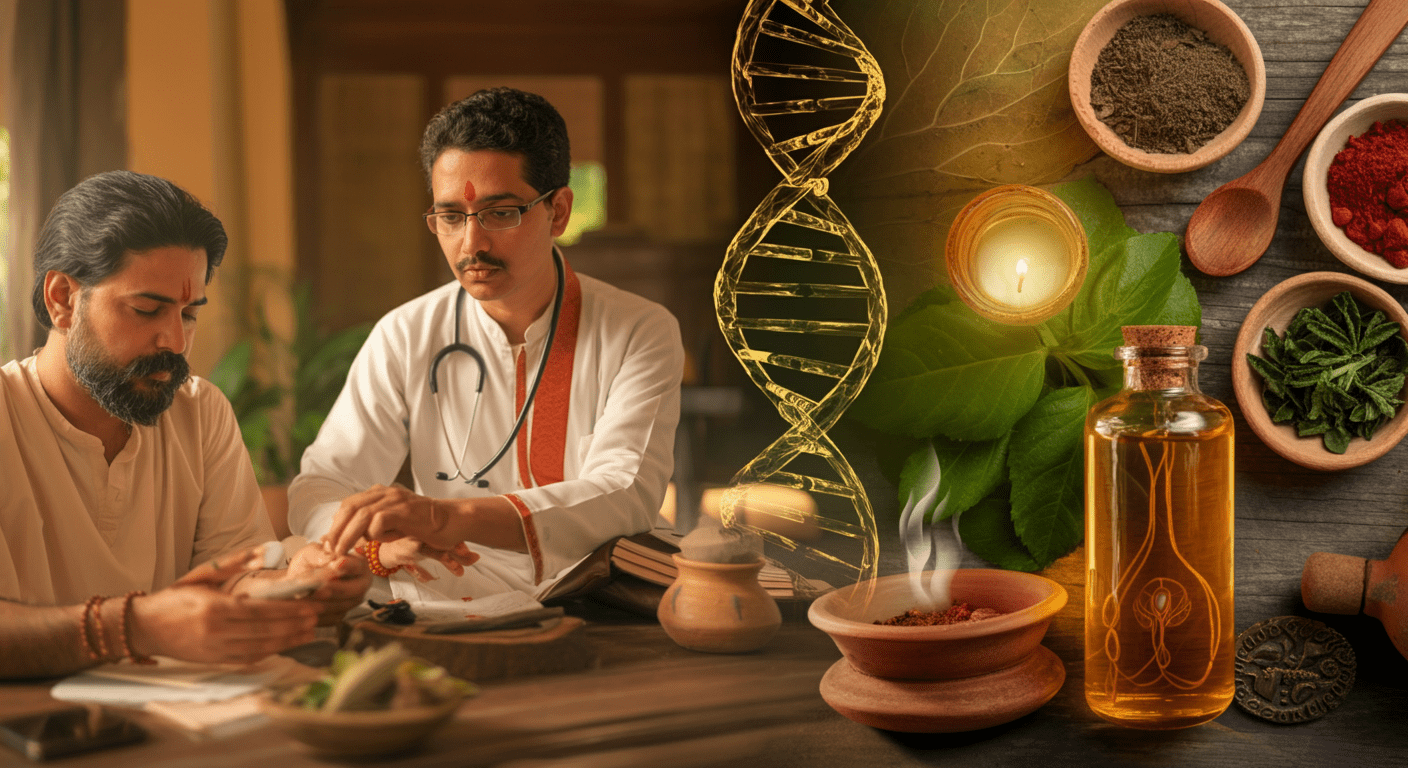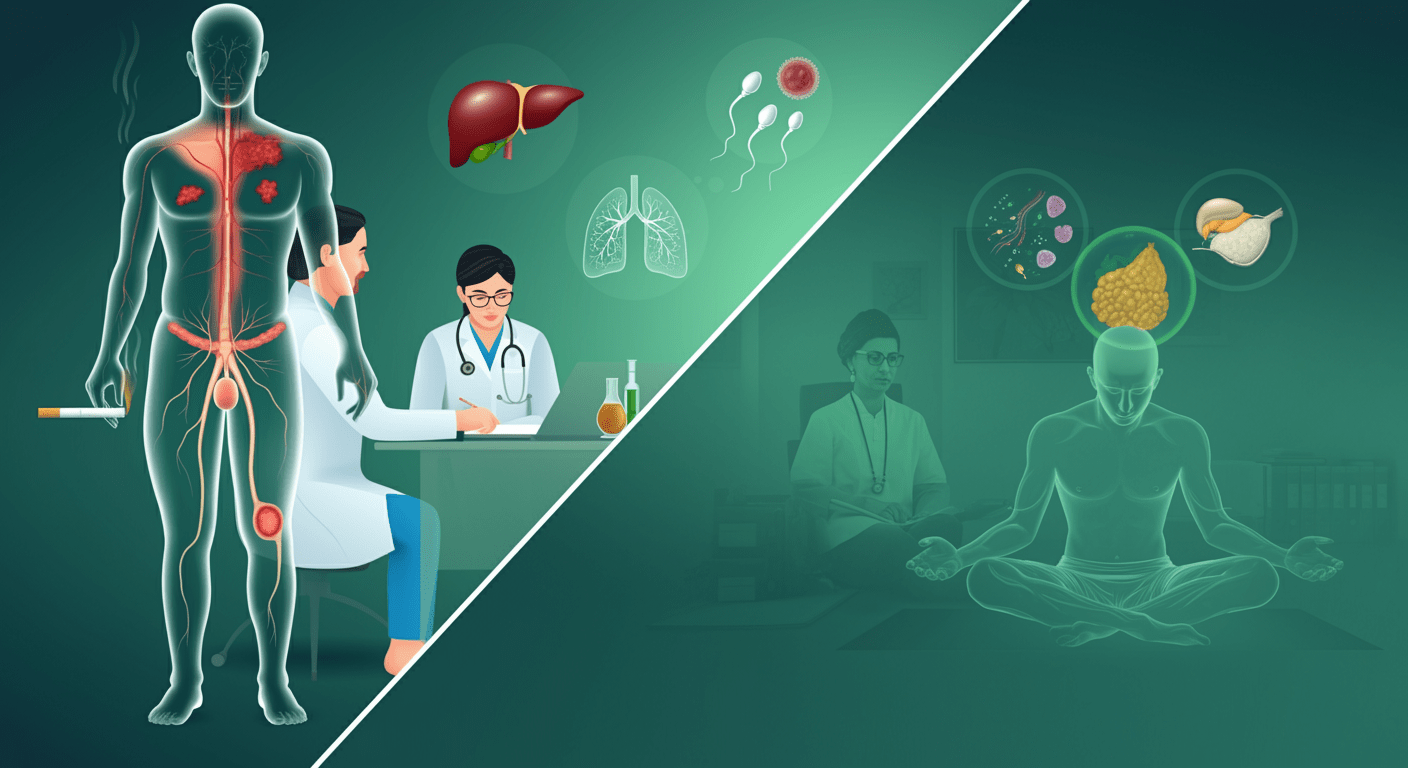Ayurveda, the ancient science of life, provides a comprehensive framework not only for maintaining physical health but also for understanding the deeper essence of human existence. One of the fundamental aspects of Ayurveda is its holistic approach to life, which encompasses spiritual, mental, and physical well-being. A key feature of this holistic perspective is the division of human life into four stages, each designed to align with the natural progression of an individual’s development. These stages are known as Ashramas in Ayurveda, and they guide people through different phases of life, from youth to old age, to ensure balance, fulfillment, and spiritual growth.
At Heal Life India, we understand that true well-being comes from aligning our daily practices with the natural rhythms of life. By integrating the principles of Ayurveda into each stage of life, we offer treatments, guidance, and consultations that promote overall health. Our goal is to help you achieve harmony and wellness in every phase of your life.
The Four Stages of Life in Ayurveda
The Ashramas or stages of life in Ayurveda are carefully designed to help individuals progress physically, mentally, and spiritually. These stages reflect the evolution of a person from childhood to adulthood, middle age, and old age. By following the teachings of Ayurveda, each stage can be harmonized with the body’s unique needs.
- Brahmacharya (Student Phase) – The Foundation of Knowledge and Discipline
The first stage of life, Brahmacharya, spans from childhood to approximately 25 years of age. This phase is primarily dedicated to learning, education, and personal development. It is a time for the accumulation of knowledge and building the foundations of discipline.
- Core Focus:
In Brahmacharya, the focus is on education and self-discipline. Young individuals are expected to develop mental clarity, physical strength, and emotional stability. This is also a time to cultivate moral values and ethics that will guide them throughout life. - Celibacy and Self-Control:
According to Ayurveda, the period of Brahmacharya is vital for conserving vital energy. This energy is directed towards personal growth, learning, and physical development. By practicing celibacy and temperance during this phase, the individual develops mental and physical resilience. - Kapha Dosha Dominance:
In this stage, the Kapha dosha predominates, fostering growth, stability, and strength. The body is building its physical and mental reserves, creating a strong foundation for future life stages. - Charaka Samhita Reference:
Brahmacharya is referred to in the Charaka Samhita, the ancient Ayurvedic text that provides guidelines for health, lifestyle, and well-being. It states:
Sanskrit:
“ब्रह्मचर्यं जीवनस्य शिक्षायाः च संयमस्य च कालः।”
English:
“Brahmacharya is the period of life dedicated to learning and self-discipline.”
Hindi:
“ब्रह्मचर्य जीवन का वह चरण है जो शिक्षा और संयम को समर्पित है।”
At Heal Life India, we emphasize the importance of this stage by offering Ayurvedic consultations that focus on lifestyle and health habits for students, ensuring they establish a healthy, disciplined foundation for the future.
- Grihastha (Householder Phase) – Fulfillment of Responsibilities and Creation of Prosperity
The second stage of life, Grihastha, occurs between the ages of 25 and 50. This phase is characterized by family life, career-building, and fulfilling social responsibilities. It is a time to actively engage in worldly duties, raise a family, and contribute to society.
- Core Focus:
The individual focuses on establishing a career, maintaining a household, and raising children. The Grihastha stage involves achieving personal goals related to wealth, career, and material success. This phase emphasizes the pursuit of Artha (wealth) and Kama (pleasure), but also requires a balanced approach to ensure that spiritual practices are maintained alongside material pursuits. - Social and Family Responsibilities:
Ayurveda acknowledges the importance of balance during this stage. While the pursuit of material wealth is essential for survival and well-being, it should not overshadow the need for personal growth and spiritual development. The role of family and community is vital in this phase, and a sense of responsibility toward others strengthens the individual’s sense of purpose. - Pitta Dosha Dominance:
During this phase, the Pitta dosha becomes more pronounced, directing energy toward action, decision-making, and the fulfillment of life goals. The body’s digestive fire is strong, and energy levels are high, making it an ideal time for personal growth and achievement. - Charaka Samhita Reference:
The Charaka Samhita outlines this phase by emphasizing the balance between material life and spiritual practice:
Sanskrit:
“गृहस्थं जीवनं यत्र लौकिक कार्याणि संपाद्यन्ते।”
English:
“Grihastha is the stage where one fulfills worldly duties and seeks prosperity.”
Hindi:
“गृहस्थ जीवन वह चरण है जहाँ सांसारिक कर्तव्यों का पालन और समृद्धि की खोज की जाती है।”
At Heal Life India, we recognize the significance of Grihastha by offering Ayurvedic lifestyle counseling for individuals in this phase. This includes advice on diet, exercise, and stress management, all tailored to maintain health and well-being during the busy years of adulthood.
- Vanaprastha (Retirement Phase) – Transition to Spirituality and Reflection
The third stage of life, Vanaprastha, typically begins around the age of 50. This phase marks the transition from active family and career life to a more spiritual focus. The individual starts to withdraw from the responsibilities of household life and begins to focus more on inner growth and spiritual practices.
- Core Focus:
The individual begins to detach from worldly possessions and transitions into a more reflective life. The role of family and social responsibilities diminishes, and there is a shift toward spirituality. This is the time for deepening self-awareness and engaging in practices like meditation, yoga, and prayer. - Mentorship:
The Vanaprastha phase is also a time for the individual to pass on knowledge to the younger generation. It is a period of mentorship and guidance, helping others by sharing the wisdom accumulated over the years. - Vata Dosha Dominance:
During this stage, the Vata dosha becomes prominent, fostering introspection and a shift toward mental and spiritual practices. The focus is on cleansing the body and mind, preparing for the final phase of life. - Charaka Samhita Reference:
The Charaka Samhita suggests that this stage is about seeking spiritual liberation while still remaining active in society, though less involved in material concerns:
Sanskrit:
“वाणप्रस्थं जीवनं यत्र सांसारिक बंधनों से मुक्ति की ओर अग्रसरित होते हैं।”
English:
“Vanaprastha is the phase where one transitions from worldly attachments to spiritual pursuits.”
Hindi:
“वाणप्रस्थ जीवन वह चरण है जहाँ सांसारिक संबंधों से मुक्ति की ओर अग्रसरित होते हैं।”
At Heal Life India, we offer Ayurvedic rejuvenation therapies, focusing on mindfulness, detoxification, and spiritual healing during this period of life. Our services are designed to help individuals prepare physically and mentally for the spiritual journey ahead.
- Sannyasa (Renunciation Phase) – The Final Stage of Liberation
The fourth and final stage of life is Sannyasa, which begins around the age of 75 and continues until the end of life. This phase is characterized by renunciation of worldly desires and the pursuit of spiritual liberation.
- Core Focus:
In Sannyasa, individuals renounce material attachments completely and focus solely on attaining moksha (liberation). This phase emphasizes the ultimate goal of life – to achieve self-realization and unite with the divine. - Detachment and Devotion:
The individual leads a life free from any distractions or desires, dedicating time to deepening spiritual practices like meditation, chanting, and prayer. The goal is to free oneself from the cycle of birth and death. - Charaka Samhita Reference:
The Charaka Samhita emphasizes that Sannyasa is the ultimate stage of life, leading to spiritual freedom and liberation:
Sanskrit:
“संन्यासं जीवनं यत्र मोक्ष की प्राप्ति होती है।”
English:
“Sannyasa is the ultimate stage of life, leading to liberation and self-realization.”
Hindi:
“संन्यास जीवन का वह चरण है, जहाँ मोक्ष की प्राप्ति होती है।”
At Heal Life India, we offer Ayurvedic spiritual counseling for individuals in the Sannyasa phase, providing guidance on achieving mental peace and spiritual well-being in the later years.
Conclusion
The four stages of life in Ayurveda provide a profound understanding of how we evolve from childhood to old age, both physically and spiritually. Each stage serves a unique purpose, helping individuals live harmoniously with themselves and the world around them. At Heal Life India, we integrate these Ayurvedic principles into our personalized treatments, ensuring that individuals of all ages can achieve optimal health and spiritual growth throughout their lives. Whether you’re seeking Ayurvedic rejuvenation therapies, spiritual counseling, or personalized consultations, we are here to guide you through every phase of life.
Frequently Asked Questions (FAQs) on the 4 Stages of Life in Ayurveda
1. What are the four stages of life in Ayurveda?
The four stages of life in Ayurveda, known as Ashramas, represent the natural progression of an individual’s journey from youth to old age. These stages are designed to promote balance, health, and spiritual growth. The four stages are:
Brahmacharya (Student Phase) – Focused on education and self-discipline.
Grihastha (Householder Phase) – Focused on family, career, and societal responsibilities.
Vanaprastha (Retirement Phase) – Focused on detachment from worldly duties and spiritual growth.
Sannyasa (Renunciation Phase) – Focused on complete detachment from material life and spiritual liberation.
Each stage is aligned with the changing needs and responsibilities of the body, mind, and spirit.
Charaka Samhita Reference: Sanskrit:
“आचार्यः शास्त्रं प्रवर्तते ब्रह्मचर्यं समाहितम्।”
English Translation:
“The life of Brahmacharya is devoted to education and discipline.”
Hindi Translation:
“ब्रह्मचर्य जीवन शिक्षा और अनुशासन को समर्पित है।”
2. What is the significance of Brahmacharya (Student Phase) in Ayurveda?
Brahmacharya, the first stage of life, is dedicated to learning, self-control, and personal growth. In this phase, an individual is expected to focus on acquiring knowledge and developing the mental and physical strength necessary for future responsibilities.
Key Focus:
Brahmacharya emphasizes celibacy, education, and the development of ethical values. This period is crucial for building a foundation of self-discipline and physical health. The Kapha dosha dominates this phase, promoting growth and stability.
Health Benefits:
Following the principles of Brahmacharya allows individuals to conserve vital energy, improve concentration, and foster a strong, healthy body and mind.
Charaka Samhita Reference:
Sanskrit:
“ब्रह्मचर्यं जीवनस्य शिक्षायाः च संयमस्य च कालः।”
English Translation:
“Brahmacharya is the period of life dedicated to learning and self-discipline.”
Hindi Translation:
“ब्रह्मचर्य जीवन का वह चरण है जो शिक्षा और संयम को समर्पित है।”
3. How does Grihastha (Householder Phase) contribute to personal growth in Ayurveda?
The Grihastha phase, spanning from approximately 25 to 50 years, is a stage of active participation in life. In this phase, individuals focus on their family, career, and social responsibilities. This stage teaches balance, as individuals juggle material pursuits with spiritual growth.
Key Focus:
During the Grihastha phase, an individual is expected to focus on raising a family, creating wealth, and contributing to society. The pursuit of Artha (wealth) and Kama (pleasures) is balanced with spiritual practices to ensure harmony between worldly and spiritual goals.
Health Benefits:
Following Ayurveda’s guidance during this phase helps individuals manage stress, maintain health, and foster harmonious relationships. The Pitta dosha becomes more prominent in this stage, enhancing energy and motivation.
Charaka Samhita Reference:
Sanskrit:
“गृहस्थं जीवनं यत्र लौकिक कार्याणि संपाद्यन्ते।”
English Translation:
“Grihastha is the stage where one fulfills worldly duties and seeks prosperity.”
Hindi Translation:
“गृहस्थ जीवन वह चरण है जहाँ सांसारिक कर्तव्यों का पालन और समृद्धि की खोज की जाती है।”
4. What is the role of Vanaprastha (Retirement Phase) in Ayurveda?
The Vanaprastha phase, generally starting at age 50, marks a transition from worldly responsibilities to a focus on spiritual development. This stage encourages individuals to reduce their material attachments and engage in more reflective, spiritual practices.
Key Focus:
During Vanaprastha, individuals begin to withdraw from daily duties and responsibilities, focusing instead on spiritual growth. The goal is to attain inner peace and prepare for the final phase of life. Individuals may engage in meditation, prayer, and other spiritual practices to enhance self-awareness.
Health Benefits:
Ayurveda encourages using this stage for rejuvenation, helping individuals focus on their mental health and emotional stability. The Vata dosha becomes more prominent in this stage, guiding individuals toward introspection and spiritual awareness.
Charaka Samhita Reference:
Sanskrit:
“वाणप्रस्थं जीवनं यत्र सांसारिक बंधनों से मुक्ति की ओर अग्रसरित होते हैं।”
English Translation:
“Vanaprastha is the phase where one transitions from worldly attachments to spiritual pursuits.”
Hindi Translation:
“वाणप्रस्थ जीवन वह चरण है जहाँ सांसारिक संबंधों से मुक्ति की ओर अग्रसरित होते हैं।”
5. What is the significance of Sannyasa (Renunciation Phase) in Ayurveda?
Sannyasa, the final stage of life, is a period of complete detachment from the material world. It is the stage where an individual focuses entirely on spiritual liberation and self-realization, seeking to transcend the physical realm and unite with the divine.
Key Focus:
During Sannyasa, the individual renounces all material possessions, desires, and attachments. This phase emphasizes self-realization, meditation, and spiritual liberation (Moksha). It is the culmination of the journey toward enlightenment and peace.
Health Benefits:
The Sannyasa phase allows individuals to live free from the distractions of the material world, promoting deep mental clarity, inner peace, and spiritual health. Ayurveda emphasizes mental well-being and spiritual peace as the ultimate goals of this stage.
Charaka Samhita Reference:
Sanskrit:
“संन्यासं जीवनं यत्र मोक्ष की प्राप्ति होती है।”
English Translation:
“Sannyasa is the ultimate stage of life, leading to liberation and self-realization.”
Hindi Translation:
“संन्यास जीवन का वह चरण है, जहाँ मोक्ष की प्राप्ति होती है।”
6. How do the doshas affect the four stages of life in Ayurveda?
In Ayurveda, the three Doshas—Vata, Pitta, and Kapha—play a significant role in each phase of life. The balance of these energies influences the physical, mental, and emotional states of individuals throughout their journey.
Brahmacharya (Kapha Dominant): During the student phase, Kapha dosha is prominent, promoting growth, stability, and strength. It supports the development of the body and mind.
Grihastha (Pitta Dominant): In the householder phase, Pitta dosha governs the pursuit of goals, action, and energy. It directs the individual toward success and achievement.
Vanaprastha (Vata Dominant): In retirement, the Vata dosha becomes prominent, encouraging introspection, reflection, and spiritual growth.
Sannyasa (Vata and Pitta Balanced): The final stage is marked by a balance of Vata and Pitta, where the individual seeks spiritual liberation through detachment and inner peace.
Charaka Samhita Reference:
Sanskrit:
“वृद्धे सत्यं ज्ञानं च सन्न्यासः।”
English Translation:
“In old age, wisdom and truth lead to renunciation.”
Hindi Translation:
“वृद्धावस्था में सत्य और ज्ञान संन्यास की ओर ले जाते हैं।”
7. How can Ayurveda help individuals during each stage of life?
Ayurveda provides tailored guidance to support health, well-being, and personal growth throughout all four stages of life. At each stage, Ayurvedic principles help individuals address the unique challenges and responsibilities they face.
Brahmacharya (Youth): Ayurveda recommends herbal tonics, dietary adjustments, and mindfulness practices to support education, physical growth, and emotional balance.
Grihastha (Adulthood): In the householder phase, Ayurveda suggests stress-management techniques, nutritional plans, and rejuvenation therapies to maintain vitality and health.
Vanaprastha (Retirement): Ayurveda offers detoxification, Panchakarma therapies, and spiritual counseling to guide individuals into the peaceful retirement phase.
Sannyasa (Old Age): For the final phase, Ayurveda emphasizes meditation, spiritual nourishment, and mental wellness, helping individuals achieve inner peace and spiritual liberation.
At Heal Life India, we provide personalized Ayurvedic consultations to ensure that each phase of life is supported with the right remedies, treatments, and lifestyle practices.












